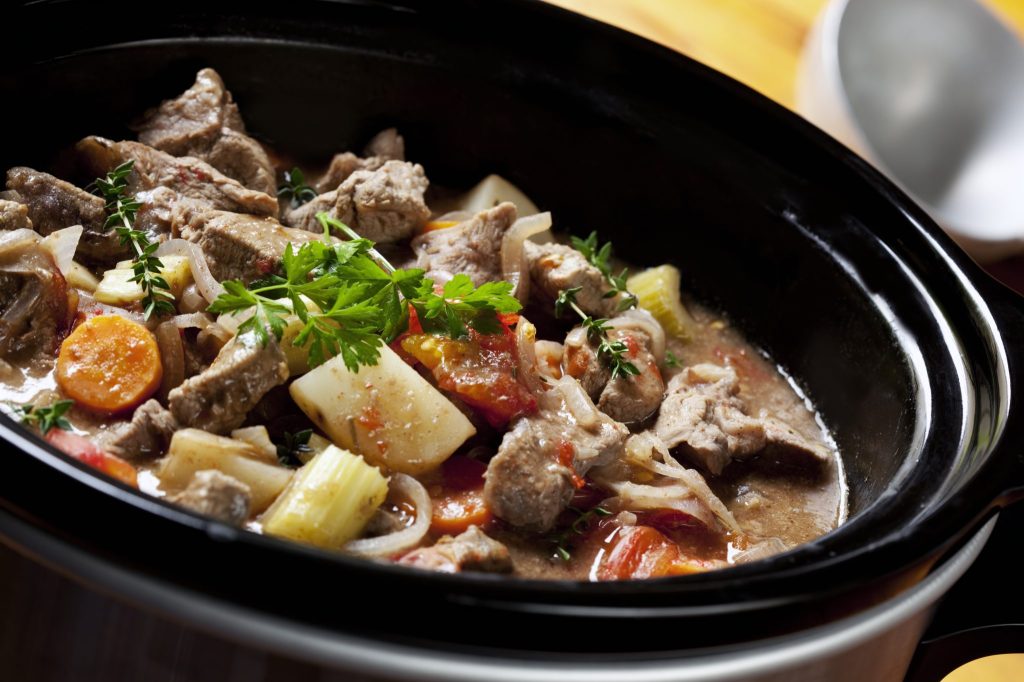Home & Garden Spot: Tips and tricks for slow cookers
Published 1:30 pm Wednesday, December 9, 2020

- Whether you’re cooking up a hearty chili or a warm chicken dish, there is almost no way to go wrong with a seasonal slow cooker creation.
The cool, brisk air settling in can only mean one thing: It’s time to pull out the slow cookers! Yes, ’tis the season for cozy slow-cooker creations. However, proper use can help cooks avoid catastrophes.
Janice Hall, an Alabama Cooperative Extension System food safety and quality regional agent, said it is imperative to read the manual before beginning to use the slow cooker. The manual should provide certain guidelines, such as safety, care and cooking suggestions, for their particular slow cooker.
Slow cookers have the reputation of being a “put the food in and leave it” kind of appliance. However, it is important to first read the manufacturer’s directions for safe attendance and use of the cooker. Some cookers may be left unattended, while others may need supervision.
It’s cooking time
When it’s time to cook, start clean. Wash hands, utensils and the slow cooker before handling the food. Also, before cooking, make sure all meats and other ingredients are completely thawed. It is equally as important to preheat the cooker while the food is being prepped.
“Preheating allows the food to have a head start on the cooking process,” Hall said.
When choosing which setting to cook on, Hall said people should not cook on the warm setting. This particular setting will not allow temperatures to get high enough to actually cook your food.
“The warm setting is designed to keep your cooked food warm,” Hall said.
While the food is cooking, make sure to keep the lid closed. As tempting as it may be to check on the food, opening the lid will allow heat to escape, lowering the temperature by 10 to 15 degrees Fahrenheit each time it’s opened. This will substantially increase the overall cooking time.
After successfully cooking the food, cool down leftovers before storing them. Hall recommends dividing the food into smaller portions, using stainless steel containers and placing these containers into an ice bath. Stir food frequently to distribute the cold temperatures. This will cool the food without having to place it in the fridge warm.
There may be times where something is cooking in a slow cooker and the power goes out. Hall offers the following recommendations if this happens:
• When no one is home and the power goes out before the meal is done, discard the food, even if it looks OK.
• If someone is home and the power goes out before the meal is done, try to continue cooking the food by some other means.
• If the cooking process is completed, the food will remain safe for up to two hours.
Is there anything it can’t do?
With what seems like the magic cooking ability of a slow cooker, the question remains: Is there anything that can’t be cooked in them? According to Hall, the only thing people should not cook in a slow cooker is large cuts of frozen meats. This is because of the temperature danger zone where bacteria can start to grow.
“Bacteria grows rapidly at temperatures between 70 and 125 degrees,” she said.
Slow cookers cook food at a low temperature over several hours, generally between 170 and 280 degrees. Therefore, it is essential to thoroughly thaw meats before cooking.
“Cooking frozen meat at a slow rate and temperature can cause bacteria to grow, resulting in a contaminated product,” Hall said.
When cooking meats, always check the internal temperature before consuming. The following are the proper temperatures for some of the meals people commonly cook in a slow cooker:
• Roasts of meat – 145 to 160 degrees;
• Poultry (chicken, turkey parts and duck) – 165 degrees; and
• Soups, stews and sauces – 165 degrees.
Cleaning, storing
Again, make sure to check the manual for the best cleaning options for that particular slow cooker. Some inner pots are dishwasher safe, while others may need to be hand-washed.
“Once dried, place the inner pot back into the heating unit and store it with the lid in place,” Hall said. “Storing with the lid in place prevents air contaminants from settling in the pot.”
For more help or to ask questions, visit www.aces.edu or call 256-232-5510.
— Posted by Mary Lee Oliver




